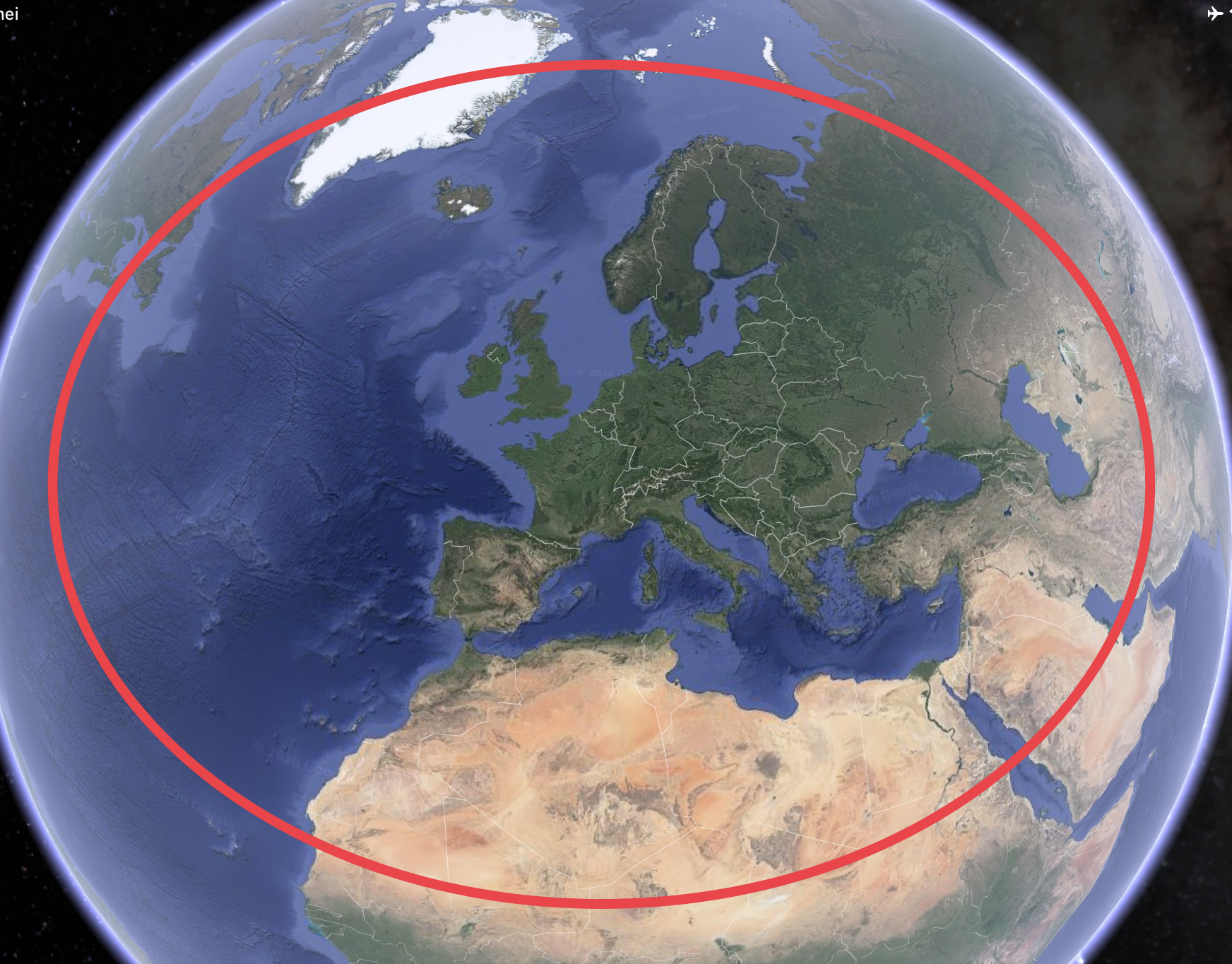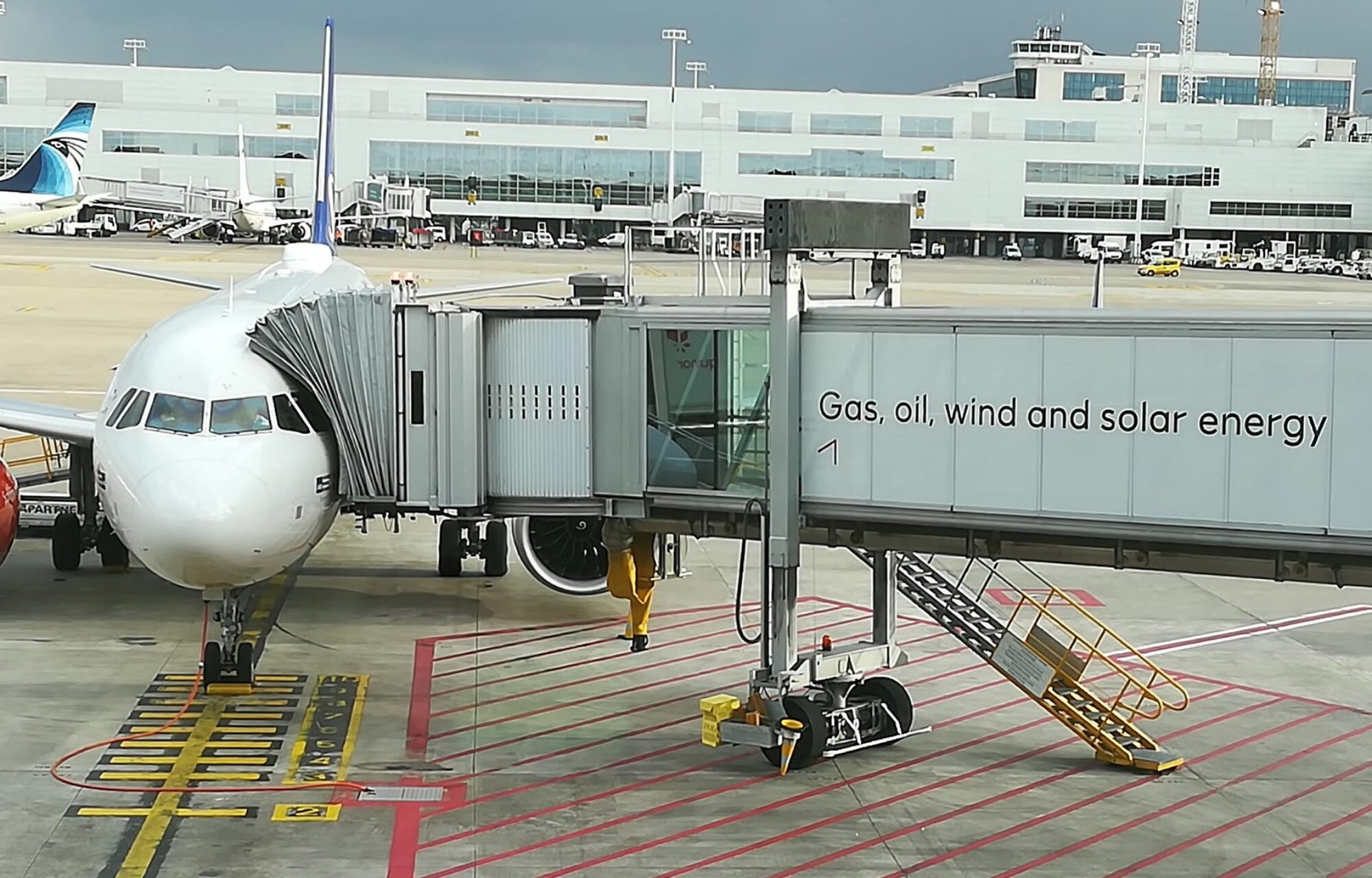EU ETS trading must be extended to all flights landing or taking off in any EU ETS member state, but …
EU ETS CO2 emission counting must “stop the clock” at a certain distance CO2 emission rules for flights outside EU ETS airspace must stop at a certain (great-circle) distance, e.g. beyond 5,000 km. This “stop the clock” policy avoids unfair competition from flights with intermediate stops outside the EU ETS. Otherwise, fuel efficient direct flights get unfair competition from less fuel efficient flights with intermediate stops. For example, Frankfurt to Tokyo flights would pay emission rights for the whole distance of 9,400 km, whilst the same flights with an intermediate stop would pay much less, e.g. only for the distance from Frankfurt to Moscow (2,000 km), the connecting flight Moscow – Tokyo (7,500) would not fall under EU ETS emission. Note: a great-circle distance is the shortest distance between departure and destination. Aircrafts often fly longer routes to profit from favourable tailwinds or to avoid strong headwinds.
CO2 emission rules for flights outside EU ETS airspace must stop at a certain (great-circle) distance, e.g. beyond 5,000 km. This “stop the clock” policy avoids unfair competition from flights with intermediate stops outside the EU ETS. Otherwise, fuel efficient direct flights get unfair competition from less fuel efficient flights with intermediate stops. For example, Frankfurt to Tokyo flights would pay emission rights for the whole distance of 9,400 km, whilst the same flights with an intermediate stop would pay much less, e.g. only for the distance from Frankfurt to Moscow (2,000 km), the connecting flight Moscow – Tokyo (7,500) would not fall under EU ETS emission. Note: a great-circle distance is the shortest distance between departure and destination. Aircrafts often fly longer routes to profit from favourable tailwinds or to avoid strong headwinds.
“Stop the clock”, it’s advantages and acceptable disadvantage
1. It is straight forward
Under a “stop the clock” regulation, airlines only buy CO2 emission rights for the part of the flight falling under the EU ETS rules. Administration of such a regulation is straight forward as great-circle distances per route and CO2 emission per aircraft type is easy to calculate.
2. Prices for fuel within the EU ETS remain
A ”stop the clock” regulation wouldn’t change the prices for fuel within EU ETS. Airlines will therefore re-fuel their aircraft within the EU ETS and not fly-in their fuel from elsewhere, see: Aviation spoils tons of kerosene for small financial profits, nr. 1 for the negative effects of fuel price differences.
3. 55.7% of all international flights contribute
Great portions of the busiest intercontinental flights will contribute to EU ETS. The first 5,000 km covers a great part of many busy intercontinental flights, e.g. the distance from Frankfurt to New York is 6,200 km. It is favourable to get emission rights of the greatest parts of these frequently flown routes. By this, 55.7% of all international flights contribute at least for the first 5,000 km to the EU ETS.
4. Only longer intercontinental flights get away cheaply
Only the longer intercontinental flights get away buying emission rights only for a part of these flight. Nevertheless, contributing for at least 5,000 km is far better than nothing.
However unfortunate the disadvantage looks at the first glance, the importance of the “stop the clock” can be inferred from the competition European airlines experience from those based in the oil rich Middle East. Intercontinental south- and eastbound flights have to compete with social standards and even lower costs for fuel, which goes with an Impact of Middle East Emerging Carriers on US and EU Legacy Airlines

One Reply to “When to stop the clock”